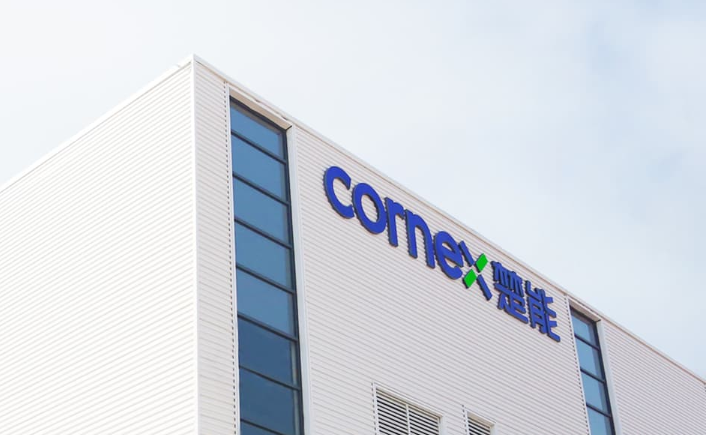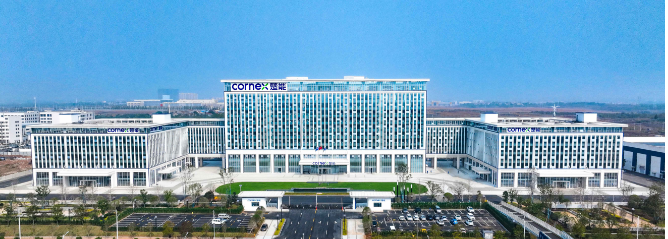Power Shift: Cornex's Winning Streak Reveals the Future of Energy Storage in China
Published: March 05, 2025 18:05
Following the 2025 Spring Festival, Cornex(楚能新能源) has been on a winning streak, securing multiple contracts from China's state-owned power enterprises. As a leading player in China's energy storage sector, Cornex's four major deals in just two months have turned heads across the industry.
These wins reflect deeper shifts in the energy storage landscape—fiercer competition, falling prices, higher barriers to entry, and rapid market consolidation among top-tier companies.

source: Cornex
Cornex's Winning Streak
Cornex's four major contracts come from core projects at state-owned power enterprises, spanning energy storage systems and lithium iron phosphate batteries, with a combined capacity exceeding 28.5GWh. These deals not only showcase the company's capabilities but also signal where the industry is heading.
1. Selected for China Power Construction's 16GWh Framework
China Power Construction's 2025-2026 energy storage procurement represents the largest such project among state-owned power companies at 16GWh. Of 76 bidders, only 27 made the cut—a 64% elimination rate. Cornex made the list thanks to superior technical solutions and cost management, positioning itself for future project wins.
2. Sole Winner of China Power Construction's 500MWh Battery Contract
Cornex emerged as the only successful bidder for Power Construction Equipment Company's 500MWh lithium iron phosphate battery procurement. This exclusive win highlights their edge in battery technology, particularly their reliable high-density (314Ah) products.
3. Qualified for China Power Construction's Battery Framework: Playing in the Big Leagues
For Power Construction Equipment Company's 2024-2025 lithium iron phosphate battery framework, Cornex qualified alongside industry heavyweights like Trina Storage and EVE Power. This bid tested companies' comprehensive supply capabilities, with Cornex's inclusion cementing its industry standing.
4. Shortlisted for CNNC Huineng and Xinhua Electric's 12GWh Procurement
Competition was especially intense for the CNNC Huineng project, with 65 companies competing for just 7 spots—an elimination rate approaching 90%. Chu Energy's selection validates its ability to integrate and deliver on large-scale projects.
Cornex's contract wins aren't a fluke. By late 2024, its annual production capacity topped 110GWh, placing it among China's top five manufacturers, with contracts with over 200 global clients and annual battery sales exceeding 42GWh. This combination of production muscle and market reach has been crucial to its expansion.

source: Cornex
Cutthroat Competition: The Great Energy Storage Shakeout
Cornex's breakthrough reflects the brutal reality of today's market. Since 2024, the energy storage sector has become a classic case of "too many players, too little pie," with company elimination rates steadily climbing.
The industry is evolving from a free-for-all to a game of survivor. Take China Power Construction's 16GWh project—only 27 of 76 bidders qualified, with even industry giants like CATL and CRRC Zhuzhou surprisingly missing the cut. Similar patterns emerged in the CNNC Huineng project (7 qualifiers from 65 bidders) and Huadian's 4GWh project (6 qualifiers from 49 bidders).
We're witnessing a shift from "land grab" to "intensive farming," where only companies with the right mix of technology, cost structure, and delivery capabilities will survive.
**Price war intensifies**: Average prices have crashed below 0.5 yuan/Wh. The China Power Construction project saw an average bid price of 0.4845 yuan/Wh, with winning bids averaging 0.4687 yuan/Wh, and the lowest bid bottoming out at 0.4418 yuan/Wh.
Compared to the second half of 2024's average price of 0.587 yuan/Wh, this represents a 20%+ price drop. This trend reflects both falling raw material costs and companies slashing margins to win market share.
Bar keeps rising: The game has shifted from "who's biggest" to "who's best qualified." State-owned power enterprises now impose stringent requirements on bidders. China Power Construction demands proven energy storage contracts of at least 1000MWh over three years plus certification of zero fire incidents; CNNC Huineng requires experience operating at least one 200MWh project.
These hurdles effectively lock out smaller players and newcomers, accelerating resource concentration among industry leaders.
Trends: The Triple Battlefield of Price, Technology, and Ecosystem
Competition has evolved from a simple pricing game to a complex battle fought on multiple fronts.
First, price pressure is driving innovation. Companies are forced to innovate to stay profitable at lower price points. Chu Energy's 314Ah lithium iron phosphate batteries, for instance, reduce unit costs through higher energy density while maintaining safety through advanced thermal management. Looking ahead, technologies like solid-state and sodium-ion batteries could be game-changers.
Second, system integration is now make-or-break. State-owned enterprises increasingly value end-to-end capabilities. Companies offering just batteries or inverters struggle to compete, while those providing integrated "cells + PCS + BMS + EMS" solutions have the edge. Chu Energy's win in the CNNC Huineng project stems from its vertically integrated offering.
Additionally, ecosystem partnerships create defensive moats. Competition has expanded beyond products to partnerships. Chu Energy's close relationships with state-owned power enterprises not only generate orders but also give it a seat at the table for standard-setting and R&D initiatives. Collaborations with upstream and downstream players (like joint bids with solar and wind companies) further strengthen market positions.

source: Cornex
Outlook: The Big Get Bigger
According to CNESA data, China saw 528 companies bidding on new energy storage projects in 2024—up 68% year-over-year—but the number of energy storage companies closing shop or losing licenses doubled in the same period. This stark contrast signals an even more brutal shakeout in 2025.
Market leaders continue to gain share. Companies with technological advantages, deep pockets, and ample production capacity will continue squeezing smaller players. With its current order book, Chu Energy's 2025 shipments could exceed 60GWh, potentially making it a top-three player by market share.
Overseas markets offer fresh opportunity. As domestic competition intensifies, leading companies are looking abroad. Chu Energy has already inked deals with multiple international energy groups and may expand into European, American, and Southeast Asian markets through local production and technology licensing.
Policies and standards bring order to chaos. As regulations like the "New Energy Storage Project Management Specifications" take effect, entry barriers will rise further, potentially cooling the price war. Meanwhile, mechanisms for energy storage participation in power markets are improving, with business model innovation likely becoming the next competitive frontier.
The Bottom Line
In this all-out battle of price, technology, and qualifications, only companies that combine innovation, integration capabilities, and strong partnerships will thrive. For the industry, this brutal shakeout—while painful—will ultimately push China's energy storage sector toward higher-value, more sustainable development.
As renewable energy grows and power grids modernize, the golden decade for energy storage has begun. The ultimate winners will be those playing the long game, wielding technology as their spear and ecosystem relationships as their shield.
